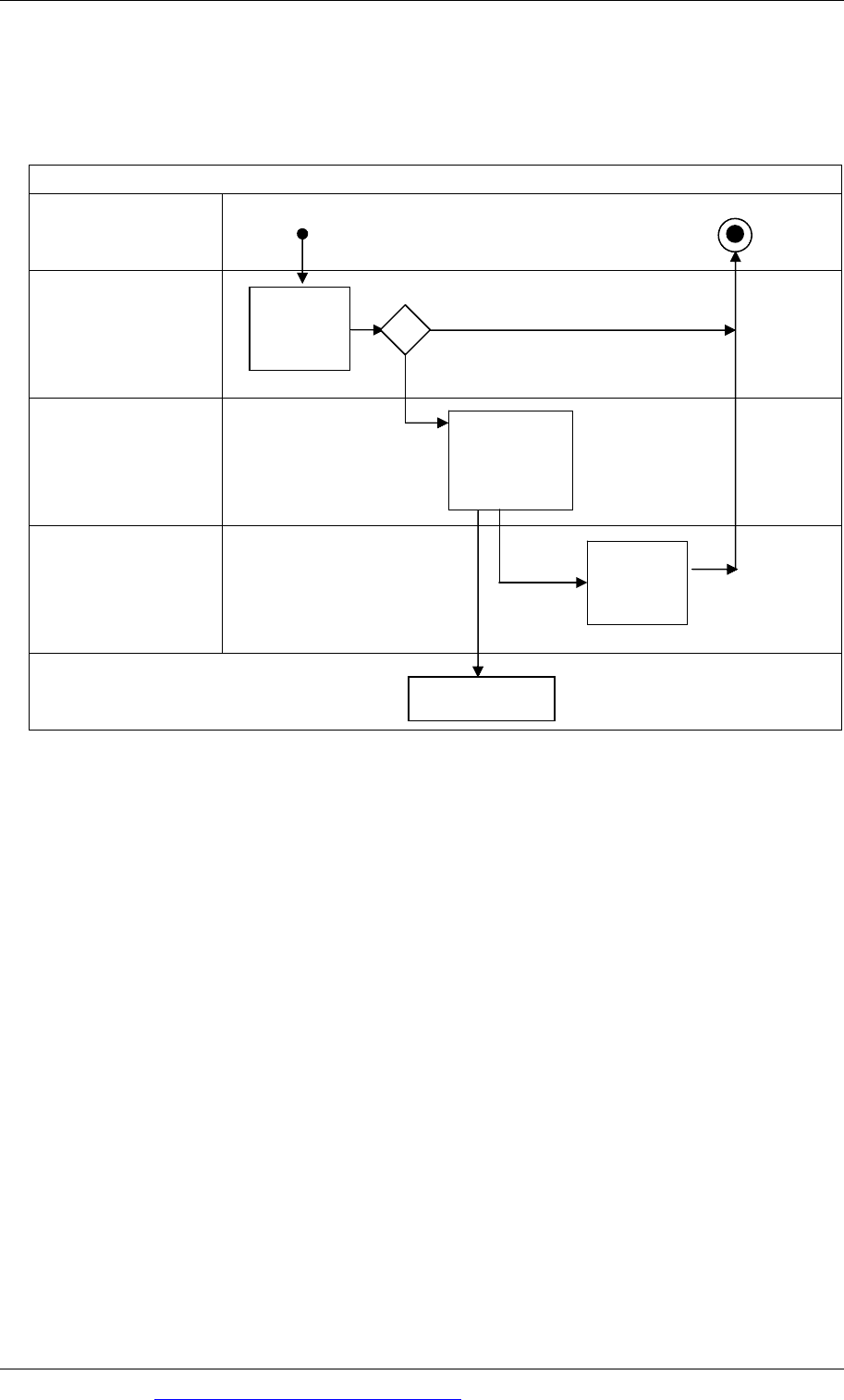ACCA P3 Business Analysis - 2010 - Study text - Emile Woolf Publishing
Подождите немного. Документ загружается.


Answers to practice questions
© EWP Go to www.emilewoolfpublishing.com for Q/As, Notes & Study Guides 485
34 R&D strategy
Some companies must invest in R&D to survive and grow. The main financial
problems associated with R&D are likely to be as follows:
Deciding how much in total to invest in R&D each year.
Dividing the total spending between pure research, applied research and
development.
Recognising the probability of failure of many research projects and some
development projects. Returns are therefore extremely difficult to predict.
Even so, recognising the need to innovate. There is a risk that the ‘accounting
mentality’ will persuade companies to invest more in products they have
already developed, and avoid R&D.
Companies that do not spend enough on R&D will fail to innovate. They must
therefore copy new products that rival companies develop and bring to market.
However, these new products may be protected by patents.
There has to be a system for planning, monitoring and controlling spending on
R&D.
35 Rational strategic plans
The question gives a statement of the ‘rational model’ of strategic planning.
If we accept that the overall objective is to maximise the wealth of its shareholders,
there are several weaknesses with the rational model.
(a) There is a very large element of risk and uncertainty in long-term planning. At
best, management can only develop strategies that they think are likely to
increase shareholder wealth.
(b) Management is often under pressure to achieve a good performance (profits,
dividends and so on) in the short term. They may therefore prefer strategies
that provide good short-term results, without giving proper thought to the
long-term. Good short-term results are often achieved at the expense of
longer-term benefits. (For example, short-term profits can be increased by
choosing not to invest in new equipment.)
(c) Shareholders and other stakeholders often have conflicting interests, and it is
not possible to develop strategies that optimise the benefits of all groups.
(d) Management do not have perfect knowledge. The information available to
them is limited, and their ability to absorb and understand it all is also limited.
Managers therefore make strategic plans within the limits of what they know
and understand. This is the concept of ‘bounded rationality’ in strategic
planning.
(e) Managers may simply choose strategies that will provide results that are
acceptable and ‘good enough’ for shareholders and other stakeholders. This is
the concept of ‘satisficing’ (rather than ‘optimising’ to achieve the best results
possible).

Paper P3: Business analysis
486 Go to www.emilewoolfpublishing.com for Q/As, Notes & Study Guides © EWP
36 Emergent strategy
(a) Strategy analysis is the process of assessing the strategic situation (perhaps
using techniques such as SWOT analysis) and identifying different alternative
strategies that might be chosen to pursue the entity’s objectives. The preferred
strategy is then selected.
Strategy formulation is the process of developing plans and establishing
targets for achieving the selected strategy.
Strategy implementation is putting the strategic plans into operation, and
monitoring actual progress by comparing actual achievements against the
targets.
(b) Mintzberg argued that some strategic plans might be developed and
implemented in this rational way. These are deliberate strategies.
More usually, planned strategies often do not go according to plan, because
unexpected developments occur that alter the situation. As a result, some of
the planned strategies might be abandoned, and new strategies selected in
response to the new circumstances. A strategy adopted in order to take
advantage of an unexpected opportunity is an emergent strategy. Mintzberg
argued that the strategies of entities are a combination of deliberate and
emergent strategies.
37 Stage in development
The situation can be analysed using Greiner’s growth model.
The company appears to have reached a ‘crisis of red tape’, and the way forward in
its development is ‘growth through collaboration’ between head office and
investment centre management. The collaboration should be based on team-work
and problem-solving, to replace the old systems of control through reporting and
accounting.
38 Business processes
(a) The Harmon process-strategy matrix is as follows:
Strategic importance
Low
High
Low
High
Process complexity
and dynamism
Simple, stable,
routine, ordinary
processes.
Should be capable of
high degrees of
automation
Simple, stable, but
valuable processes.
Should be capable of
high degrees of
automation to gain
efficiency
Complex, dynamic,
ordinary processes.
Might be better to
outsource
Complex, dynamic,
valuable processes.
Business process
redesign and
improvement

Answers to practice questions
© EWP Go to www.emilewoolfpublishing.com for Q/As, Notes & Study Guides 487
It is likely that the expense claim process would be in the bottom left-hand
quadrant: simple, stable, routine and not of great strategic importance.
(b)
Expense claim process
Employee
Manager
Accounting
Cashier
Bank
39 Features of organisational change
Huczynski and Buchanan identified four basic features of organisational change,
that management should recognise
Triggers of change. These are developments, internal or external to the entity,
that point to the need for change. An entity should have surveillance or scanning
mechanisms in place to identify these triggers when they arise.
Interdependencies. Changes in one part of an organisation or in some aspect of
an organisation’s structure or operations will inevitably have a knock-on effect.
Other people within the organisation, and other processes and operations will
also be affected. (This is similar to the concepts in the McKinsey 7S model.)
Conflicts and frustrations. Change brings conflict and frustrations. Some want the
change to happen, and others resist it. People wanting change become frustrated at
the lack of change, or slow progress towards change. This leads to conflict.
Time lags. There are time lags in the change process. Planned changes rarely go
according to plan or according to the planned timetable. People accept change at
different rates, and systems and processes might change at different rates too.
Change can therefore be messy.
Expense
claim
approval
Details
posted,
payment
re
q
uested
Payment
notification
Initiating event
End of the process
Approved
Not approved
Bank transfer

Paper P3: Business analysis
488 Go to www.emilewoolfpublishing.com for Q/As, Notes & Study Guides © EWP
40 Change
(a) BPR is an approach to introducing a transformational change within an
organisation. An entire business process is re-designed and re-organised (‘re-
engineered’). BPR usually involves reorganising work around a system,
instead of organising work by departmental functions. As a result, processes
are operated by multi-disciplinary teams.
(b) A suitable model might be the Lewin’s three-step change model, supported by
Lewin’s force field analysis.
(i) The three-step change process is unfreeze, move (change) and re-freeze.
The ‘unfreeze’ step is to develop a recognition amongst the people
affected that change is needed and is desirable, and obtaining agreement
about the nature of the changes that are required. The ‘move’ step is
making the change. Once a change has been made, there is a risk that
employees will go back into their former habits and ways of doing
things: ‘re-freeze’ means taking measures to ensure that the change
becomes established and the new ‘accepted way of doing things’.
(ii) Force field analysis can be used to assess the strength of resistance to
change, and the nature of the forces driving change. Lewin
recommended that the most effective approach t gaining acceptance of
change is to find ways of reducing the forces of resistance to change.
(c) Internal marketing involves establishing the views and opinions of people
inside the organisation and trying to ‘market’ an idea to them – for example,
trying to persuade them of the need for change. In the context of change
management, internal marketing means finding out the views of employees
towards a proposed change and trying to promote the change as ‘a good
thing’. In external marketing, the customer is the main consideration. In
internal marketing, the employee is the ‘customer’ whose views and opinions
must be taken into consideration: plans for change should be amended where
appropriate, in response to the views of employees.
41 Channel for marketing and distribution
For suppliers
A marketing and sales channel available to users 24 hours a day, 7 days a week.
Products can be sold to customers anywhere in the world, provided that there is
a reliable distribution channel.
Ability to respond immediately to customer requests.
Customers can access up-to-date information about products on the supplier’s
web site.
Direct mailing by e-mail is cheaper and more efficient that direct mail marketing
by post.
It is cheaper to operate an on-line marketing and sales operation than to open a
retail outlet.

Answers to practice questions
© EWP Go to www.emilewoolfpublishing.com for Q/As, Notes & Study Guides 489
Electronic products can be delivered immediately to customers anywhere in the
world.
Can be linked easily to a system for recording management information about sales.
For customers
A convenient 24/7 method of shopping.
Easy access to a large number of potential suppliers
Ability to shop around for the best deal (for example, the lowest price)
Fast service
Convenience of immediate delivery for electronic products
42 Stefan Lund
(a)
Selling through the supermarket group
Advantages Disadvantages
Access to a large number of potential
customers
Potential for large sales volumes
The supermarket will probably sell the hats
as a fairly narrow product range of; therefore
less design requirements
Probably easily-managed distribution
arrangements
Possibly large sales volumes: this could act
as a drain on cash in the early stages of the
business.
Single customer: risk of losing the customer
if sales are disappointing or there are
problems with supply.
Stefan cannot use his own brand for the
products.
There may be pressure from the
supermarket group to reduce prices.
Sales prices for Stefan will be lower than the
prices charged by the supermarkets.
Selling through independent fashion shops
Advantages Disadvantages
Shops specialise in selling fashion goods.
Access to customers looking to buy fashion
goods.
Stefan can use his own brand for the
products.
Shops will probably want to sell products at
high prices, therefore potential for high gross
profit margins
Possibly low sales volumes
Shops will probably want a wide range of
differentiated products.
Need for high quality
Possibly higher costs of distribution (to the
shops)
Using some of the shops might be
unprofitable.
Sales prices for Stefan will be much lower
than the retail prices charged by the shops.
Selling through web site and Internet
Advantages Disadvantages
Products can be made to order.
Product quality may not be such an
important issue.
Stefan can use his own brand for the
products.
Ability to be flexible with design: new designs
can be varied to meet customer preferences.
Direct contact with users of the product
Higher prices and gross profit margins
Problem of attracting potential customers to
the web site.
Distribution will be more expensive and time-
consuming: products must be delivered to
customer addresses
Order-handling will be more complex due to
the larger volume of small orders to handle.

Paper P3: Business analysis
490 Go to www.emilewoolfpublishing.com for Q/As, Notes & Study Guides © EWP
(b)
Supermarkets Fashion shops Internet
Product Small product range
Large volumes
Quality important
Wide product range
Small volumes
Quality important
Wide product range
Volume difficult to predict
Quality probably less
important
Place Supermarkets Specialist shops Internet, web site, e-
commerce
Price Pricing probably critical:
low prices
Prices to the customer
will be high
Prices probably neither
high nor low.
Promotion Through the
supermarket’s own
brand
Need for brand
development
Need for brand
development.
Success of web site in
attracting ‘hits’ will be
critically important
43 Travel goods firm
Tutorial note: A suggested answer is given here. Your answer may differ in some
details.
Strengths
Strong brand and reputation
Worldwide facilities for manufacture and distribution
Managers with ideas for improving the business
Successful experience with EDI
Successful experience with web site and e-commerce.
Weaknesses
Poor communications between divisions within the company
Little or no access to information about competitors
Possibly the decentralisation of IS/IT systems is a weakness.
Opportunities
Possible use of intranet to improve internal communications and interchange of
ideas
Possible use of extranets to improve communications with customers
Possible use of an executive information system to provide more information
about competitors and the market.
Threats
Strong competition in the market. Competitors have made some successful
initiatives.
Significant fall in number of ‘hits’ on the web site.

Answers to practice questions
© EWP Go to www.emilewoolfpublishing.com for Q/As, Notes & Study Guides 491
44 Electronic marketing
(a) To provide information about theatres on their web site. Theatres may have
linked web sites, or a joint web site for theatres in the same commercial group.
The information will relate partly to the theatres themselves (and their
location) but will provide details of what is on.
(b) To allow customers to buy tickets on line, choosing the date and time of the
performance, reserving the seats and paying for the tickets.
(c) To monitor traffic (‘hits’ at each web site) and so assess customer interest.
(d) To register customers who are interested in receiving information about future
shows, and e-mail information to these customers who are willing to receive it
(direct marketing).
(e) Perhaps also obtain customer feedback about performances.
There are other opportunities for electronic marketing. For example, theatres could
link with travel firms, hotels and restaurants to offer holiday breaks to customers as
a joint package of services and entertainment.
45 Leek and Flood
(b) Value chain analysis is a model for assessing performance. Each activity in the
value chain can be investigated, to establish whether it adds value
successfully.
(c) The activities in the value chain are the primary and secondary activities. In
this case study, the identifiable activities in the value chain are inbound
logistics (delivery of parts to the plumbers’ vans), operations (plumbing
services), marketing (door-to-door marketing, directory advertising, web site,
word of mouth), after-sales service (warranties and response to complaints)
and procurement (buying parts from the single supplier). There is also some
reference to human resource management, since plumbers are given regular
training. There is no information relating to infrastructure and technological
development.
46 Business case
A report presenting a business case for a new IS/IT system should be presented
clearly. The report should have a logical structure, and it should present the
necessary information. Appendices should be used to show details, and the main
body of the report should be kept reasonably short.
A logical structure for a report would be as follows:
(1) Introduction. Explain the purpose of the report and the terms of reference for
the report writer.
(2) Current position. Explain the current position. Indicate the nature of the
current problem or opportunity.
(3) Where we want to be. Explain the business objective, and what the business is
trying or should be trying to achieve.

Paper P3: Business analysis
492 Go to www.emilewoolfpublishing.com for Q/As, Notes & Study Guides © EWP
(4) Where we are. Compare ‘where we want to be’ with ‘where we are’ or ‘where
we will be if nothing is done’.
(5) Gap analysis. The comparison of ‘where we are’ and ‘where we want to be’
should be assessed, to establish the need for movement to get from ‘here to
there’.
(6) Options for closing the gap should be described in broad outline. There may
be several different ways of trying to close the gap.
(7) For each ‘realistic’ option there should be an estimate of the costs and benefits.
Benefits may not be measurable in financial terms, and a comparison of
financial costs with intangible benefits may be appropriate.
(8) Summary. A brief summary of each option should be given, with a
comparison of their ‘net benefits’.
(9) Recommendation. The report should conclude with a recommendation. If a
business case for a new system has been made successfully, the report’s
recommendation should be to develop the preferred option.
47 Risk management process
All projects have risks. The risk management process involves identifying and
assessing these risks, and taking measures to avoid or control them. The
effectiveness of risk control measures should be monitored. The process should be
repeated regularly, as a risk management control cycle.
The process involves:
(a) Risk identification. Risks must be identified, perhaps by a special risk
management committee, or by the project team.
(b) Risk assessment. Each risk must be assessed. The aim is to decide how
significant the risk may be. The reason for assessing significance is to make a
decision about the risk avoidance or control action that might be appropriate,
in view of the size of the risk.
(c) Typically, a risk is assessed by estimating the probability that an adverse
event will happen, and the impact it would have if it did happen. (The
expected value of the cost of a risk is its probability multiplied by its impact.)
(d) Having assessed each risk, management must decide on appropriate
measures to deal with it. Risks that would have an unacceptable impact
should be avoided. For example, the risk of damage from a natural disaster
can be avoided through insurance. For some risks, control measures may be
taken to reduce the risks. For example, the risks of errors in writing new
software for a system can be reduced by means of extensive testing.
(e) Control measures should be implemented.
(f) The effectiveness of control measures should be monitored.
(g) In cases where control measures fail to work, management should investigate
the reason for the control failure, and try to learn lessons for the future. If the
risk remains, more effective control measures should be devised and
implemented.

Answers to practice questions
© EWP Go to www.emilewoolfpublishing.com for Q/As, Notes & Study Guides 493
48 Project manager
(a) A project has number of characteristics:
(i) The project should have a specific objective. The objective of a feasibility
study is to produce a feasibility report with a recommendation.
(ii) A project team is assembled to carry out the work. A feasibility study is
carried out by a specially-assembled study team.
(iii) A project should have a schedule and a time scale for completion. A
feasibility study has a target date for submitting the feasibility report.
(iv) A project should have a customer. For a feasibility study, this is the
steering committee (or similar decision-making body).
(v) A project should have a budget. A feasibility study ought to be given a
budget.
(b) Seven general responsibilities of a project manager include:
1 Selecting and organising the project team.
2 Agreement of the terms of reference with the project sponsor/computer
system user.
3 Planning the schedule of project activities.
4 Agreement of the project milestones and deliverables with the project
sponsor/senior management.
5 Control over the progress of the project
6 Control over the project budget
7 Conducting an end-of-project review meeting.
49 Project management software
1 The package can be used to produce charts and graphs, such as critical path
charts and Gantt charts
2 The package can be used to record budgeted and actual costs of the project,
and produce budgetary control reports.
3 The package can be used to schedule resources for the various tasks in a
project.
50 Requirements creep
Requirements creep is a term used to describe gradual changes made by the user to
the user requirements for a new system. If the user continually makes changes to the
requirements, completion of the project may be delayed.
There are two approaches to controlling requirements creep.
(a) Accept that requirements creep is inevitable, and use a Spiral method
approach to system development. Prototypes of the new system can be
introduced, and the system can be made operational, before the final
prototype is developed. This avoids delay in implementing the new system.

Paper P3: Business analysis
494 Go to www.emilewoolfpublishing.com for Q/As, Notes & Study Guides © EWP
The user also has the opportunity to make changes to the user requirements,
because new prototypes can be developed to include the new requirements.
(b) Establish a formal system for agreeing and authorising changes to user
requirements. The user will then need to justify changes, and get them
formally approved by management (at a suitable level of seniority). A formal
procedure could include:
A formal document including a request for a change to the user
requirements
A formal assessment of the impact the change will have (on the project
costs and completion time, and on the user’s costs and benefits from the
system)
A discussion of the proposed change and its impact, between the user and
the project team
Formal authorisation of the change in requirements
Recording the change and its justification in the documentation for the
project.
51 Balanced scorecard
(a) To set a number of performance targets in each of four key areas, with the aim
of achieving strategic objectives if all the performance targets are met.
(b) Financial targets
Customer satisfaction targets
Targets for the enhancement of internal processes
Targets for learning and growth (creating capabilities in employees and
systems).
(c) A balanced scorecard approach might be suitable for not-for-profit
organisations, where financial objectives are not as dominant as in commercial
organisations. Financial objectives in these organisations are often aimed at
achieving revenue targets or controlling costs, rather than making profits.
Profit-making entities might also choose a balanced scorecard approach when
they recognise the need to establish longer-term strategic objectives and not
concentrate exclusively on short-term profitability. The achievement of longer-
term objectives is often measured better by performance relating to non-
financial targets than by using financial targets (which tend to focus on the
short term).
